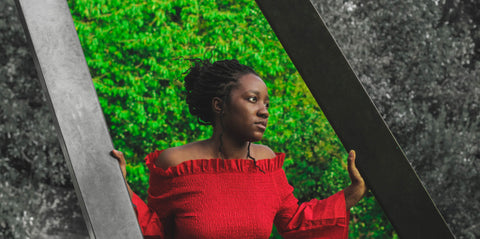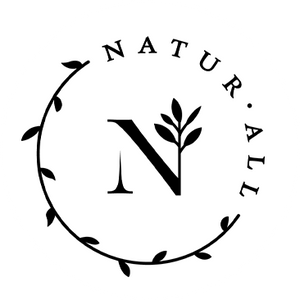
What is a protective hairstyle?
There is some controversy over what counts and what doesn’t, but simply put, a protective style is any hairstyle that protects your hair from physical, chemical, or environmental damage. Some common protective styles are box braids, crochet braids or twists, cornrows, flat twists, weaves, or twists.
What does a protective style 'protect' your hair from?
There are many factors that can damage your hair. A protective style will keep your hair safe from:- Physical manipulation from daily styling, combing, detangling, stretching, updos, or just touching your hair in general
- Chemicals, color treatments, or high heat
- Environmental pollutants in the air
- Excessive moisture from swimming or sweat
- Environmental/climate factors such as dry air, cold air, frost, wind, snow, etc.
All of these factors put stress on your hair. Over time, this stress can cause noticeable damage: your curls will look less healthy, feel more dry, or be more prone to breakage. While some factors are completely within your control to eliminate, others are hard to avoid.
How do protective styles help?
Protective styles allow your hair to rest from daily physical or chemical manipulation. They also tuck the majority of your hair strands safely away from environmental damage.

Protective hairstyles range vastly in the amount of manipulation it takes to install them, and in the amount of manipulation required once they are installed. Here is a simple breakdown:
- No-manipulation styles don’t require daily attention. For example, box braids and weaves can take quite a bit of manipulation to install, but once installed, your real hair is virtually out of sight.
- Low-manipulation styles are usually easier to install, but require some attention every day. For example, twists and buns don’t take much time, but they require a low amount of manipulation on a daily or weekly basis.

Who should use protective styles?
We recommend protective styles to everyone with curly or kinky hair. Your hair needs to rest every once in a while. However, some individuals might need to use protective styles more often. Some examples might include:
- If your hair is fine or prone to breakage, reduce breakage with protective styles.
- If you live in a cold, windy, highly-polluted, or otherwise harsh environment, your walk to work or school alone could be damaging your hair, so give it more rest than normal.
- If you’re busy, an athlete, traveling, or otherwise struggle to style your hair everyday, protective styles can be a lifesaver for you.

Myth Busting: Myths about Protective Styles
There are a lot of misconceptions about protective styles. Here’s the truth.
Are protective styles the only (or the best) way to grow your hair?
No, there are so many ways to grow your hair! Your hair is still growing when it’s not in a protective style, and it doesn't magically start growing faster when you install a protective style. The secret to hair growth is care and consistency, which you can give your hair no matter what style it’s in.
Are protective styles automatically good for my hair?
This is also a myth. In order for a protective style to do its work, it has to be carefully installed, maintained, and refreshed. Sometimes protective styles can do more damage than protection.
- Don’t install the protective style too tightly (this can happen with cornrows, flat twists, box braids, etc.) Tight styles cause breakage and hair loss.
- Don’t forget about your actual hair, especially if you wear a wig, crochet braids, or hair extensions. It still needs to be moisturized, washed, and taken care of regularly.
- Don’t leave a protective style in too long. While it can be tempting to put your hair in braids and forget about it, this can cause tangling, dryness, and breakage if you don’t switch up the style. We recommend leaving protective styles in for about two weeks on average- and never push more than two months.
No protective style is necessarily better or worse than any other, but whatever you choose should actually protect your hair.
You can find people out there with every sort of opinion. (Ex: “It’s not a protective style if it involves hair that’s not your own,” “It doesn’t count if any of your ends are exposed,” or “You don’t love your real hair if you use certain protective styles.”) Don’t let these opinions concern you. The only thing that should cause concern is if your protective style causes excessive shedding, breakage, tangles, or hair loss.

Common questions about protective hairstyles
How do I care for my hair while it’s in a protective style?
This will be different depending on the style, but we have four rules of thumb.
- Keep your hair moisturized! You might not have to use moisturizers as often as normal when your hair is in a protective style, but do not neglect moisture. Use moisturizers and oils to prevent dry and brittle hair.
- Keep your hair clean. Dirt, grease, and product will build up whether or not your hair is in a protective style, so wash it regularly.
- Don’t leave the style in too long. As we mentioned above, this will eventually lead to hair damage, tangling, and hair loss. Just like you need to let your hair rest from being styled, you need to let it breathe from protective styles.
- When you take out the protective style, refresh your hair with NaturAll's Fresh Frozé Treatment Deep Conditioners.
Do protective styles help hair grow?
Protective styles do not cause your hair to grow any faster than it normally does. However, when installed properly, protective styles can prevent breakage and hair loss that is typically caused by daily or weekly styling. This means that your hair might retain more length and end up longer than it would if you had not used a protective style.
Some people also enjoy the experience of seeing their hair growth all at once. Day to day, it doesn't feel like your hair is growing at all. But hide your hair for a month and look again, and you will see that extra 1/2 inch of length! This can create the illusion of hair growth.
Be careful- sometimes protective styles can slow down your hair growth if they are installed wrong and cause breakage or hair loss. Now that would be counter-productive!
How long is too long to keep a protective style?
To keep your hair as healthy as possible, we recommend keeping protective styles for 2-4 weeks. We know- getting braids or twists can be expensive and time consuming, so it feels like a shame to have them removed so quickly! But leaving a protective style for too long can cause tangling, dryness, breakage, matting, and buildup of dirt and grease.
If you're traveling or for some reason can't take out your style that quickly, you will probably be okay- but never leave in a style for more than two months.
How long should I wait in between protective styles?
If you are installing protective styles properly, not too tightly, and caring for your hair while it is in the protective style, then the style should not cause any damage to your hair. This means you can switch fairly quickly between different protective styles. Make sure you give your hair some time to breathe- a week or a couple weeks will help- and give your hair a rich deep conditioning treatment. Then you can go ahead and try your next style!
However, if your protective style is not installed properly, you may want to wait several months before trying again. Installing braids too tightly can cause hair loss, or traction alopecia, and you should not put braids in again until your hair grows back. Similarly, if you "set it and forget it" with your style and neglect to wash and moisturize, you might take out your style to find your hair weak and brittle. Again, give your hair some months to restore before you try again. (And this time, take care of your hair while it's in a protective style!)
What is the best protective style?
This depends on you, your lifestyle, your sense of style, and what you want to get out of a protective style. If you want to spend as little time as possible styling your hair, or if you want to see what it feels like to have really long hair, try box braids or crochet twists. If you want to protect your hair but you don't want to use fake hair, try cornrows or flat twists! If you want to save money, try a low-manipulation style you can easily do yourself like twists or a bun. The possibilities are endless, and the good news is, you can try them all! No style is permanent.











